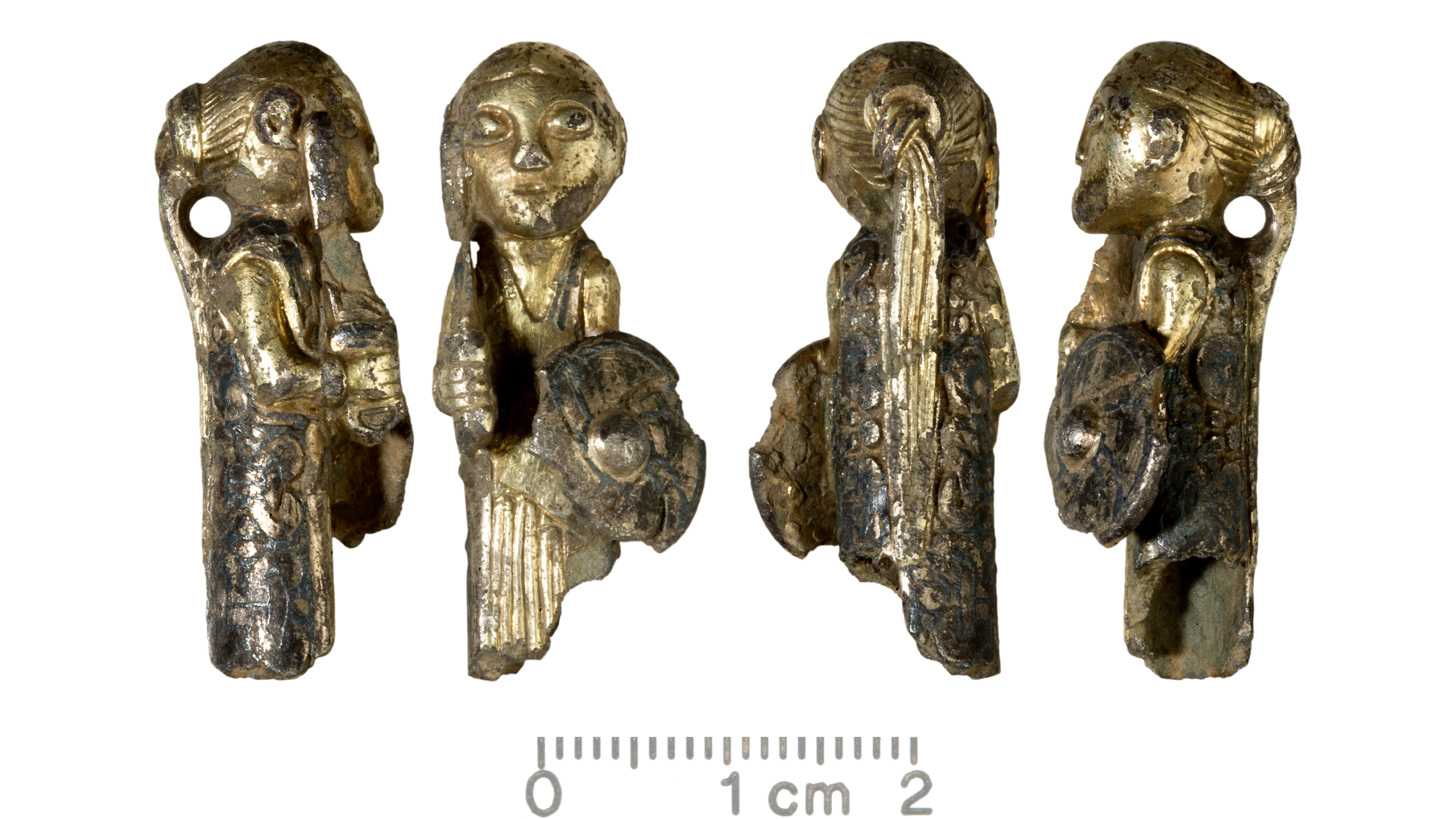Name: Hårby Valkyrie
What it is: Silver figurine
Where it is from: Village of Hårby, Funen Island, Denmark
When it was made: Around A.D. 800 (Early Viking Age)
Related: Apulian rhyton: A 2,300-year-old Spartan-hound-shaped cup that was likely used at boozy bashes
What it tells us about the past:
This cast silver figurine of a Valkyrie — a mythological maiden who assists Odin, the Norse god of war — is a unique example of Viking Age metalworking that provides clues about the role of armed women during the time period (793 to 1066).
The naturalistic female figure was discovered by metal detectorists in the Danish village of Hårby in 2012 and is currently on display at the National Museum of Denmark.
The tiny female figurine is just 1.3 inches (3.4 centimeters) tall and weighs 0.4 ounces (13.4 grams). Its body is partly hollow, and much of it has been covered with a thin layer of gold. A black metallic alloy called niello has been used to highlight and decorate the object.
The female figurine is depicted with her hair gathered up into a ponytail that cascades down her back. She wears a V-neck dress that ends with a pleated skirt, and a pattern of intricate knots runs around the back and sides. Her left arm is protected by a shield, while her right hand clutches a short double-edged sword.
Because the figure is of an armed woman and likely represents a Valkyrie, Mogens Bo Henriksen, archaeology curator at Museum Odense in Denmark, and Peter Vang Petersen, curator of prehistory at the National Museum of Denmark, wrote in a study of the figurine in the periodical Skalk in 2013.
Valkyries were responsible for choosing which soldiers should die on the battlefield. These assistants to the Norse god of war then accompanied the dead warriors to Valhalla, where they served them plenty of alcohol to tide them over until the end of the world, when Odin needed the dead soldiers’ support to defeat the giants at Ragnarok.
The decorative style of the figurine suggests it was made around A.D. 800, or the early Viking Age. It was found in a field where archaeologists and detectorists discovered other metal objects, including Arab coins, silver ingots and discarded jewelry. Experts think the area may have been a noble’s farm in the Viking Age, complete with a metal craft workshop.
Armed female figures have been found elsewhere in Denmark and in England, but they are typically two-dimensional pendants or brooches. The partly hollow Hårby Valkyrie, however, may have adorned the top of a magical staff, Henriksen and Petersen wrote. According to the Norse sagas, divination women, or völvas, used similar staffs in their rituals. One of the female residents of the farm may once have owned the Hårby Valkyrie and used it as a symbol of power.
MORE ASTONISHING ARTIFACTS
But it is also possible that the statue is not a Valkyrie at all but rather a depiction of a real woman. Norse sagas and poems mention that women sometimes took up arms, and the Oseberg Viking ship textiles also depict women carrying swords and holding spears, archaeologist Leszek Gardeła noted in his book “Women and Weapons in the Viking World: Amazons of the North,” (Oxbow Books, 2021). In addition, about 30 Viking Age burials across Scandinavia hold the remains of women who were buried with war-grade weapons, such as swords, spearheads and shields — clues that some elite women from this time may have fought as warriors.
Archaeologist Julia Wihlborg suggested that the sword and shield of the Hårby Valkyrie may represent a woman who had manly qualities or who became a man, raising the question of whether female warriors were actually regarded as men in Viking Age society.
However, because most of the armed female figurines have been discovered as isolated finds rather than in houses or graves, experts have yet to solve the puzzle of weapon-wielding women in the Viking Age.
